
Fine Kettles Of Fish – March 2015, Canadian Packaging
By George Guidoni, Editor with Photography by John Packman
Automation Food Safety General Bagging/Weighing Cartoning Case Packing Coding & Labeling Conveying Flexibles Metal Detection 3M Canada Co. Baldor Electric Company Chantler Packaging Inc. Combi Packaging Systems LLC Eriez Manufacturing Co. Georgia Pacific LLC Great Lakes Food Company Great Lakes Smelt Key Technology Markem-Imaje Nord Gear Limited Canada Packaged Great Lakes Smelt fish Sam’s Club slideshow Squid Ink Manufacturing Inc. Triangle Packaging Machinery Co.A Great Lake bottom-feeder surfaces as a prized catch for an innovative Ontario fish processor thriving in the lucrative overseas export markets.
Photo Caption: Great Lakes Food Company president John Neate is joined by production manager Helen Hamm in the reception area of the company’s smelt processing and cold storage facility in Chatham, Ont., where the company packages several variations of Lake Erie fresh-water smelt under its flagship Great Lakes Smelt label for a fast-growing foodservice and retail customer base in the lucrative U.S., Chinese and Japanese markets, as well as for Canadian-based grocery retailers such as Loblaws and Sobeys.
With his Big City upbringing and a rewarding Bay Street career as a private equity finance specialist, John Neate may seem like the proverbial fish out of water in his new role as president and chief executive officer of the Great Lakes Food Company in a small southwestern Ontario town of Chatham, about a one-hour drive from the Windsor-Detroit border crossing to the U.S.
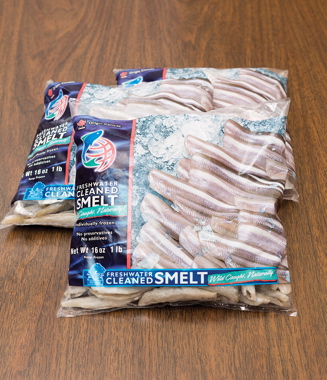 But by his own admission, the affable 42-year-old hockey dad could not be happier about his decision to leave the suit-and-tie world of high-stakes corporate finance behind in favor of running a truly unique fishing business with a niche product that is enjoying extraordinary growth potential and consumer demand in the highly lucrative markets in China and Japan.
But by his own admission, the affable 42-year-old hockey dad could not be happier about his decision to leave the suit-and-tie world of high-stakes corporate finance behind in favor of running a truly unique fishing business with a niche product that is enjoying extraordinary growth potential and consumer demand in the highly lucrative markets in China and Japan.
Focusing exclusively on fishing, processing and packaging of the tiny, but widely abundant Lake Erie fresh-water rainbow smelt, which made its way into the local water back in the late 1800s at the height of the Great Lakes regional trade boom.
CELEBRITY SKIN
While proceeding to turn a fairly ordinary small-town commercial fishery into Canada’s largest smelt processor, Neate has dramatically revamped the tiny minnow’s historically unheralded commercial significance with a new-found celebrity status as a low-priced, plentiful source of protein with all the good-for-you health attributes of the more renowned Great Lakes fish staples like perch and pickerel.
“We call our smelt the ‘Lake Erie candy’ because it has a very mild taste, unlike the more ‘fishy-tasting’ salt-water sardines, so it goes down very nicely on one’s plate whether it’s seasoned, battered or just fried straight up,” says Neate, recalling how all other nearby fish processors thought he was “absolutely crazy” when he decided to stop processing perch, pickerel and other more traditional species in order to focus exclusively on smelt.
“Being very high in vitamins like B12, calcium, iron and all the other good nutritional stuff that you get from eating fish, what made smelt such an attractive business proposition is the fact that it is such a value-priced source of protein, compared to other fish,” he explains.
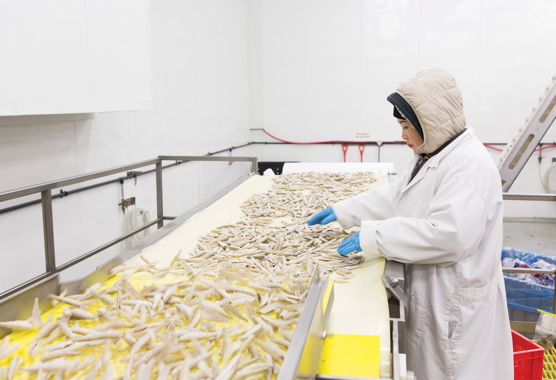
The pack room’s line workers constantly inspect raw frozen smelt making its way toward the packaging area to remove any broken or deformed pieces of the processed smelt before they make their way up to the automatic weighscales located overhead.
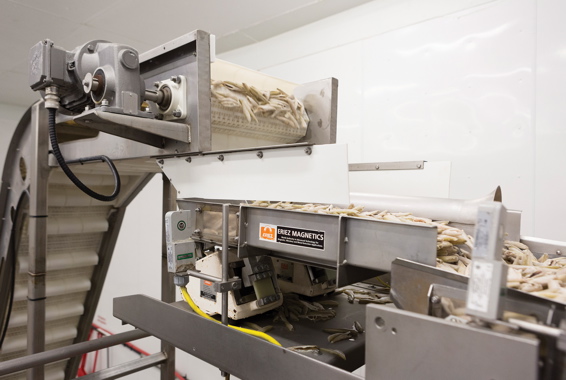
After being conveyed upwards on an incline conveyor powered by heavy-duty Nord Gear motors, the bulk smelt is dumped onto a vibratory conveyor from Eriez Magnetics to shake off any excess moisture before reaching the automatic weighscales.
“The boat price of perch and pickerel is over 10 times higher than that of smelt,” points out Neate, crediting this price differential for the company’s dramatic market share gains in China in the past couple of years, where the company’s Great Lakes Smelt brand is widely retailed throughout the country’s Sam’s Club grocery outlets.
“In China everything is about price, price, price,” says Neate, who started up a local Chinese subsidiary about three years ago to enable Great Lakes Food to sell its smelt directly to local retailers.
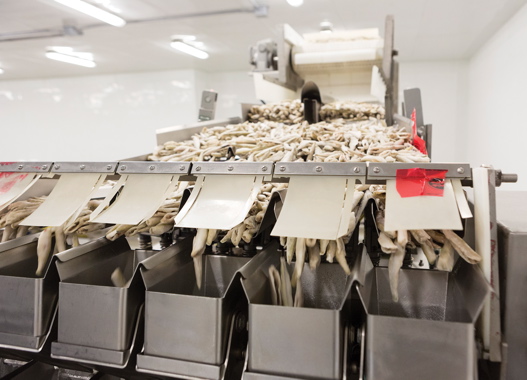
Manufactured by Key Technology, the fully-automatic, stainless-steel multihead weighscales dispense the processed smelt into precise one-pound portions that are fed in continuous sequence down to the Acceleron vertical from/fill/seal bagging machine below.
“By law, Chinese retailers have to buy from Chinese vendors, so we invested the time and money to open up a company there in order to better control the marketing, distribution and pricing of our product,” he explains.
The company’s big breakthrough in China came about two years ago when Great Lakes Food took a chance to exhibit at a large local seafood trade show, Neate reveals.
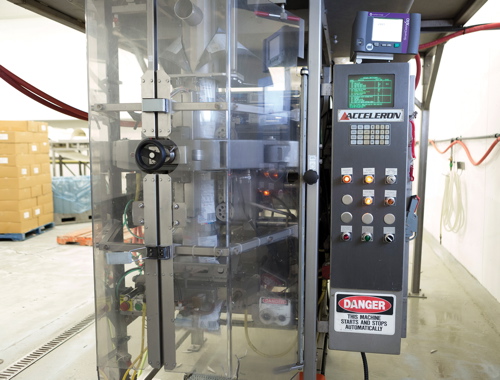
The high-speed, fully-automatic Acceleron bagging machine from Triangle Packaging Machinery uses pre-printed rollstock plastic film supplied by Chantler Packaging to fill and seal perfectly forme one-pound bags of smelt at running speed of one bag per second.
STEALING THE SHOW
“We just turned up the fryer right at the booth and the crowds just swarmed us from then on until the end of the show,” he cheerfully recalls.
“We probably gave out over 1,500 samples of smelt over the course of three days!”
This deft display of being in the right place at the right times has paid off in spades for Great Lakes Food, which relies on export markets for about 95 per cent of its revenues.
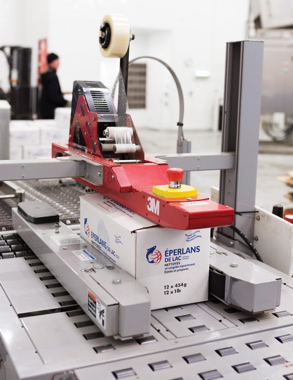
Equipped with an Accuglide three-tape head, the 3M-Matic case-sealing machine from 3M Company applies strips of 3M’s Tartan 369 clear tape onto the filled five-kilogram boxes of product just prior to the final metal detection test.
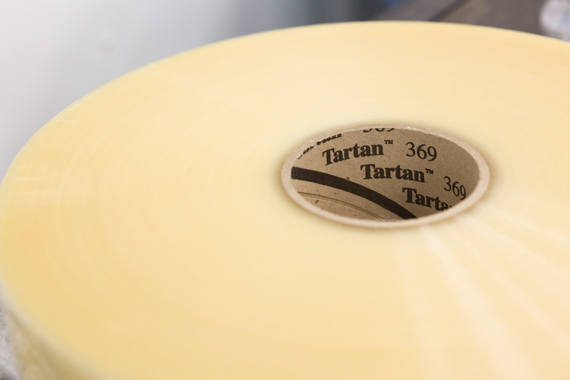
The high-strength Tartan 369 clear case-sealing tape from 3M ensures a durable seal for shipped product.
“At the moment Japan remains our biggest overseas market, but I won’t be at all surprised if China eclipses it by the end of this year,” Neate states.
“They can’t seem to get enough of our product, and we can’t catch enough of it here to fill their insatiable demand for inexpensive, but high-quality protein.”
As it stands for now, though, Great Lakes Food is already by far the largest single quota-holder of the lake-wide annual allowable smelt catch harvested by the company-owned fleet of five trawling boats.
With two windows of opportunity throughout the year to make its annual catch—a brief fishing season starting in the middle of March after the fish has spawned and a longer July-October time-frame accounting for about 75 per cent of the yearly haul—the company’s fleet head out from its docks at Port Dover daily as early as 5 a.m., using radar and sonar guidance technologies to locate the most promising schools of smelt ready for harvesting.
With the Chatham plant situated a good two-and-a-half-hour drive west of Port Dover, the boats aim to make it back ashore with the catch by 2 p.m.
This allows just enough time to truck the fish in large insulated totes to the Chatham plant—a former VersaCold cold-storage warehouse purchased in 2013—so that it can place the catch inside the on-site IQF (individually quick-frozen) freezer room by 6 p.m. daily.
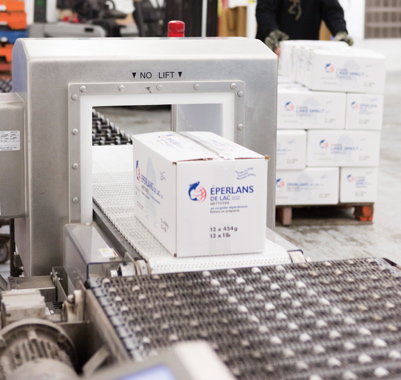
All of the filled corrugated shipping containers, supplied in pre-printed blanks by Georgia-Pacific, must pass the high-precision metal detection test performed by a custom-built, pre-calibrated large-aperture Eriez Xtreme metal detector.
“We freeze about 140,000 to 150,000 pounds of smelt on average daily during our busy season,” says Neate, noting it takes an average of 60 individual smelts to make a pound of finished, ready-to-cook product.
Upon arrival to the 54,000-square-foot-facility the fish is unloaded into a high-volume hopper and placed onto shaker tables to get rid of excess water and loose ice used to keep the fish cold during transport.
The fish are then individually quick-frozen and place in cold storage for two days.
Once removed from storage, the fish are graded by size for its various markets.
The smelt is then placed again inside cold storage until they are packed inside the plant’s 3,700-square-foot packing room for packaging.
GOOD VIBRATIONS
Once there, the smelts are laid down and transferred in bulk upwards via an incline vibratory conveyor from Key Technology to the automatic, multihead weighscales overhead, which dispensed it in precise, one-pound loads down to the Acceleron model rollfed pouchmaking machine—manufactured by Triangle Packaging Machinery Co.—which automatically fills and seals the smelts into one-pound bags at one bag per second.
The one- and two-pound bags are then poly-packed to fill the company’s five- and 10-kilogram bulk packs.
Throughout the process, plant personnel constantly inspect the continuous product flow to remove any deformed, mangled or undersized pieces of fish off the line before reaching the Acceleron vertical form/fill/seal bagger.
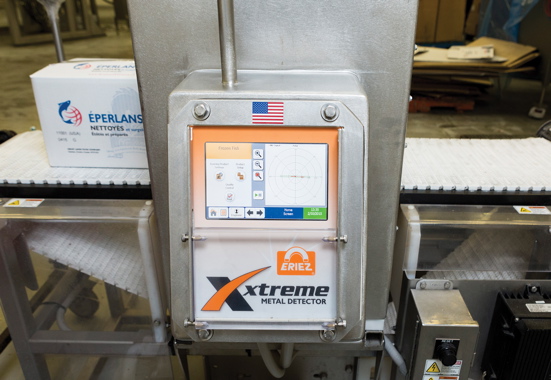
The high-performance Xtreme series metal detection system at the Great Lakes Food plant was custom-engineered with an extra-large aperture to enable a full metal inspection of the larger 10-kilogram boxes used to ship product to the Chinese market.
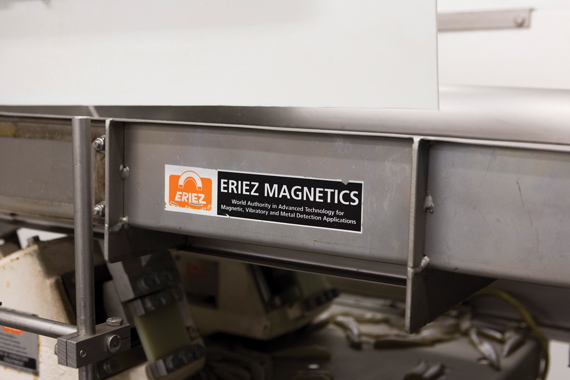
A heavy-duty vibratory conveyor from Eriez Magnetics is one of the key pieces of processing equipment employed at the Great Lakes Food plant’s pack room in Chatham.
Neate explains that both the size and type of product variables are largely determined by the end market destination.
“Our markets have changed over the years,” Neate told Canadian Packaging or a recent visit to the lively 54,000-square-foot Chatham operation, which employs up to 60 people during the busy peak season during the summer months.
“We used to sell lots of H&G (head and guts removed) smelt to traditional Italian, Portuguese and Greek ethnic food markets in North America, but their younger generations just don’t eat as much smelt as their parents did.
“Instead we now sell a lot of ‘whole round smelt,’ looking just the way it does when it’s caught, to the growing markets on the West and East Coasts of the U.S. that have big pockets of population of Asian descent, with California being our biggest market in North America.”
Similarly, both the Japanese consumers like their smelt eaten with both the heads and guts still attached, Neate relates, whereas Chinese consumers prefer their smelt to be degutted but with heads still on, with bigger-sized smelts always preferred over the average smelt length of three to four inches.
“The thing about bigger smelt is the fact that it has a lot more guts in it, which can make the fish taste bitter.
“Therefor the Chinese market prefers to have the guts removed,” Neate relates, adding he is constantly impressed by the many cooking techniques that Chinese consumers use to prepare their smelts, from barbequing them on skewers to steaming to deep-frying in breaded batter.
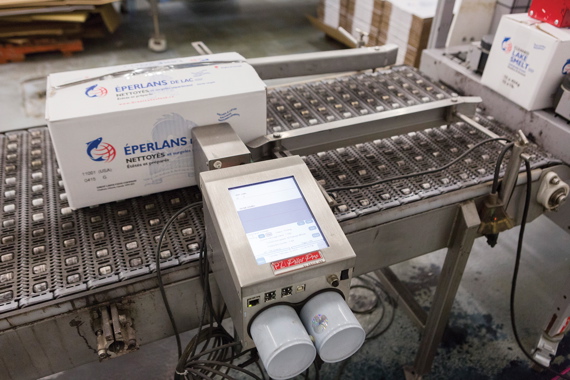
A high-performance PZ Pilot Pro model inkjet case-coder from Squid Ink Manufacturing applies all the required product traceability information onto the side of each passing carton filled with one-pound bags of frozen fresh-water smelt.
As the sealed bags of product start making their way down the line for secondary packaging, an automatic box-erecting system, manufactured by Combi Packaging Systems, forms the corrugated shipping boxes from flat blue-and-white blanks—decorated with the company’s branding logos and graphics—supplied by a Georgia-Pacific boxmaking plant based across the border in Michigan.
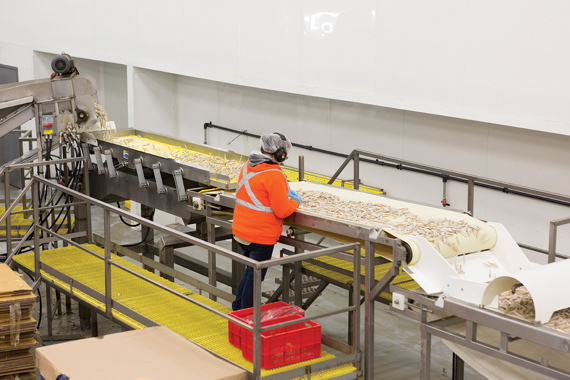
An overhead view of a line worker positioned on the mezzanine level performing visual inspection of bulk smelt to ensure optimal product consistency and appearance.
CODE OF CONDUCT
To look after its product coding and traceability needs, the pack room employs a SmartDate X40 thermal transfer coder from Markem-Imaje for inline coding of the rollstock bags, with a model PZ Pilot Pro inkjet coder from Squid Ink Manufacturing utilized to apply all the required product information onto the five- and 10-kilogram corrugated shipping carriers that are manually loaded with finished one-pound bags by the packaging line operators.
The loaded and coded cases then pass through a model 3M-Matic case-sealer manufactured by the 3M Company—equipped with the Accuglide three-tape head for secure sealing—and make their way to the final, and most critical, quality assurance test executed by the plant’s recently-purchased, high-performance Xtreme series metal detection system manufactured by Eriez Manufacturing Co. of Erie, Pa.
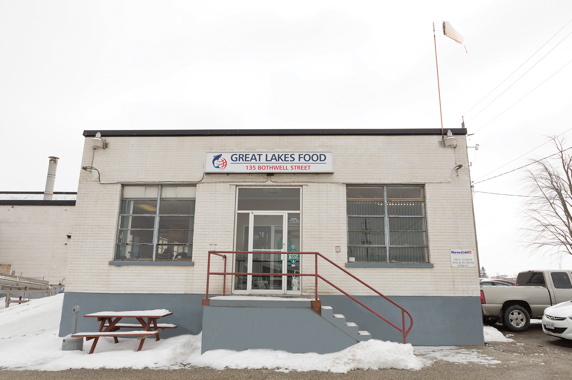
While a large portion of the plant’s processing and packaging equipment was acquired second-hand from a mothballed Campbell Soup Company plant, according to Neate, “Metal detection is the one thing you don’t mess around with in the food business.
“This is something you really must buy brand new and pre-calibrated for your specific application needs,” says Neate, pointing out that the Xtreme metal detector plays a critical role in the plant’s adherence to a strict HACCP (Hazard Analysis Critical Control Points) food safety protocol.
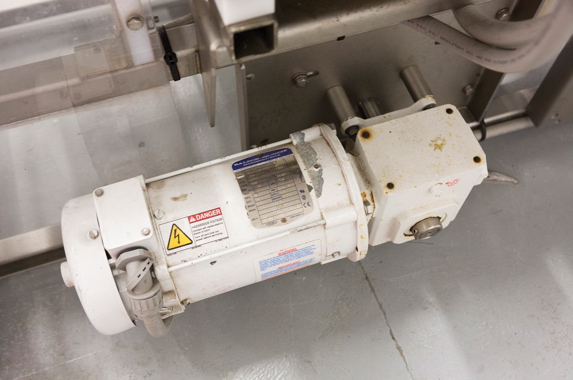
A Baldor Electric motor powers the roller conveyor transferring loaded boxes of product towards the Eriez Xtreme series metal detection system station located at the end of the pack room’s packaging line.
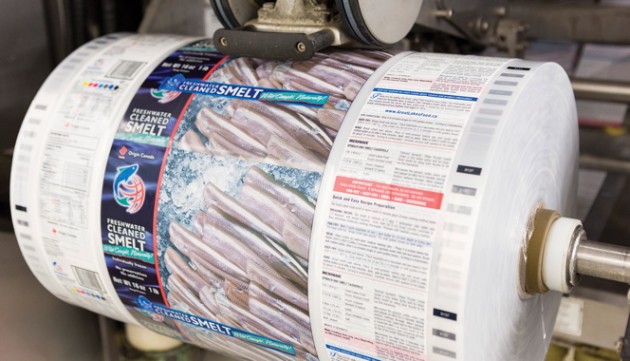
A loaded roll of high-barrier plastic film being quickly spliced inline and separated into individual one-pound bags to be filled and sealed at a high throughput speed inside the Acceleron bagging machine.
“There are plenty of opportunities throughout the process for tiny metal particles to get into the package along the way, and this system from Eriez helps us ensure that there isn’t any metal ending up with any of the fish we ship to our customers,” Neate proclaims.
Perhaps even more noteworthy, Neat is quick to single out Eriez’ design and engineering staff for custom-building this particular Xtreme series model to handle the plant’s unique application requirements—specifically of being able to perform a full metal detection test on the extra-large-sized, 10-kilogram boxes used for shipping bags of smelt to the Chinese market.
BIGGER BOX
“At the time, Eriez did not have a model that would fit the larger box dimensions that we needed, but they took on the challenge, did some redesign work, and came back to us with a custom-built metal detector with a much larger aperture that would easily handle the new 10-kilo box dimensions.
“I believe we are the first company in Canada to use such a large-aperture metal detector, and we are making very good use of it,” Neate states, praising the system’s user-friendliness, high sensitivity levels, and easy programmability.
“We never have any false readings from this metal detector,” he says, “and our line staff enjoys working with it because it has proven to be highly reliable and easy to operate.
“Whenever the alarm goes off, the box is immediately removed off the line, opened up and carefully inspected by our line operators to find out the cause of the problem—even if that means opening up every single bag inside the box to find it.”
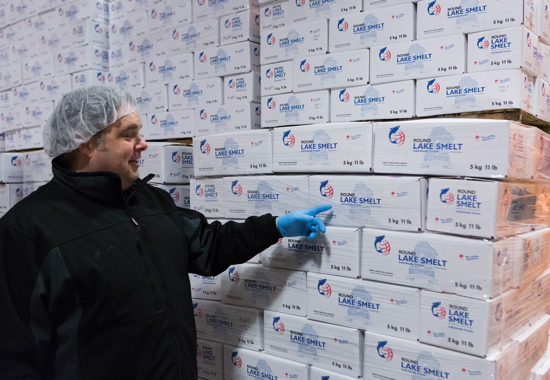
Company president John Neate inspects one of the many highly-stacked loads of product being kept at a perfect freezing temperature of -18°C inside the plant’s expansive cold-storage warehouse while awaiting shipment to foodservice and retail customers.
Says Neate: “You really can’t put a price on the value of having a reliable metal detection technology in place in the context of how not having it can negatively your business in terms of potential product recalls, brand image problems, unhappy customers, and all those other bad things that can happen because you did not address this issue seriously enough from the outset.”
Neate says this thoughtful attention to detail and a willingness to invest in high-end packaging equipment and materials has facilitated a highly effective, smooth-running, high-throughput process of producing high-quality, one-pound bags of fresh-water, wild-caught rainbow smelt boasting two-year shelf-life.
“Our success in the high-end Japanese market did not come about by accident,” Neate points out.
“They have highly-demanding specs when it comes to product quality, so our success in serving that market says volumes about the quality product we produce here with this technology.”
All in all, Neate says he has no regrets whatsoever about diving into the commercial fishery business, despite its highly competitive nature.
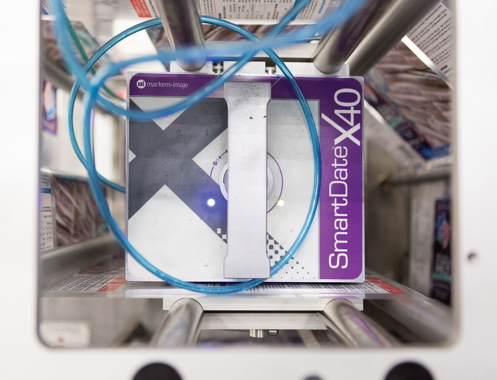
Manufactured by Markem-Imaje, the SmartDate X40 thermal transfer printer integrated within the Acceleron V/F/F/S bagging machine is used for high-speed inline application of production date codes and other variable product information onto the rollstock high-barrier film supplied by Chantler Packaging.
WORLD VIEW
“It’s a small business, but it has a lot of ‘Big World’ issues in terms of dealing with multiple currencies, multiple languages, and multiple operating jurisdictions,” Neate concludes.
“And despite the competition, there are a lot of good, down-to-earth people in the local fishing industry to make you feel that you are truly doing something worthwhile and important that really helps make a difference in many people’s lives.
“At the end of the day, we are supplying the world with affordable, high-quality protein, and that for me is as rewarding a way to earn a living as anything else out there.”
Advertisement

